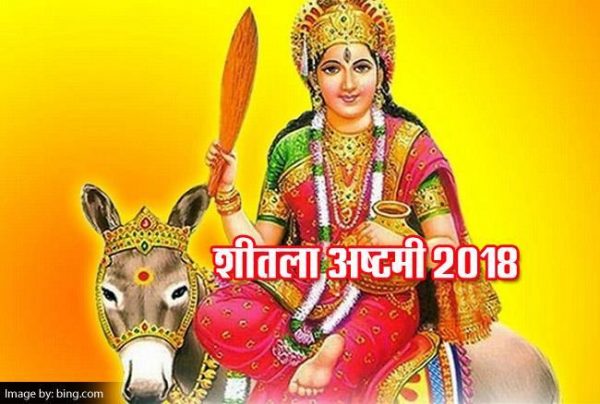In Mewar, as in the other parts of the state, there are more festivals than the days in a week, ‘saat vaar aur nau tyohar’. No exception is the month of March that started with a bang with the festival of Holi is followed by Sheetla Saptmi or Asthami, Kesariyaji Mela, Navratri, Dashamata, Chetichand, Gangaur, Mahavir Jayanti, Good Friday and Easter.
Eight days after Holi is celebrated Sheel Ashtami. Earlier the festival was celebrated on Saptami. But later on, as Maharana Bheemsingh’s birthday fell on this day, the festival began to be celebrated on the next day. But people were free to choose any one day.

The legend of Sheetla Mata Ashtami
Maharana Sangramsingh built a temple of Sheetla Mata near Rang Niwas close to Samore Bagh. On Asthami, in the morning, the Maharana would go in a procession to the temple for ‘darshan’ of the goddess. A ‘darbar’ was held in Rang Niwas. Then he used to go Navlakha or Samore Bagh where there was a lot of singing and dancing. On that day a ‘dawat’ banquet, was organized by Rajya Pradhan or senior officials in honor of the Maharana. All the Sardars and Umraos were invited to this feast. Floral garlands were offered to all the ‘durbaris’. Then the Maharana returned to his palace. After the death of Idarwali Rajmata Chhoti Rathore in 1892, the tradition of going to the house of the Pradhan stopped. Once Maharan Sajjansingh went for the ‘darshan’ of Sheetla Devi dressed in ‘bhagwa’ color clothes. To this play on Ashtami, ‘bhog’ is sent to the temple of the goddess from the royal palace.
The beliefs and rituals of Sheetla Mata Ashtami
In earlier times chickenpox was a deadly disease that was the cause of the death a large number of people. This disease spread wildly during March and April when the season changed. To appease Sheetla Mata who is considered to be a form of Ma Bhagwati Durga, she is worshipped on this occasion. The tradition is that fresh food is not cooked on this day. On the previous day, a lot of dishes such as sweet rice, pakode, kadi, halwa, and rabdi are cooked and are eaten cold on this day.
In Udaipur, in the morning women clad in gorgeous dresses with ‘puja thalis’ in their hands and singing merrily reach the Sheetla Mandir near Rang Niwas in groups. They worship the goddess reverently and offer her milk, curd and the eatables they have prepared the previous day. The ‘Katha’ of the Mata is related. The surroundings have a ‘mela’ like scene.
It is believed that worship of Sheetla Mata results in happy married life. She is also believed to be the goddess of cleanliness. She is also worshipped as Pathwari Devi, who shows people the right path, both literally and figuratively.
The reason behind eating cold meals at Sheetla Mata Ashtami
The eating of cold food on the occasion has scientific reason also. The festival falls in the transition period of two seasons – winter and summer. In winter, bacteria do not flourish in food and it remains fresh for a longer time whereas in summer it starts rotting soon. So, it is advisable to eat only fresh food after this festival.


